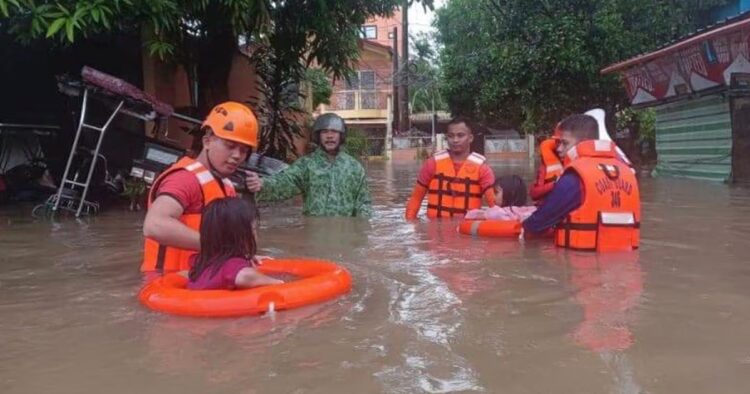A powerful typhoon, named Ewiniar, has wreaked havoc in the Philippines, causing at least seven fatalities and widespread damage. The storm, known locally as Aghon, made its way along the country’s eastern coast, lingering for several days before moving northeastward away from the islands.
While the capital city of Manila was spared from a direct hit, many other areas were severely affected.
The province of Quezon bore the brunt of the typhoon’s fury, with six villagers losing their lives to floods and falling trees. In Misamis Oriental province, another fatality occurred when a tree fell on a motorcycle taxi, claiming the life of one of its passengers.
Flash floods inundated numerous villages, with some areas submerged under as much as eight feet of water. Officials attributed the severity of the flooding to clogged drainage systems aggravated by a particularly hot summer season.
Governor Angelina Tan of Quezon province reported extensive damage to houses and infrastructure caused by the strong winds and heavy rains. The governor herself had to seek shelter elsewhere while coordinating relief efforts for displaced residents.
ALSO READ: “Cyclone Remal Unleashes Havoc In West Bengal”
President Ferdinand Marcos Jr. announced that over 26,700 people were affected by the typhoon, with thousands seeking refuge in evacuation centers across five provinces. The storm also disrupted transportation and power supply, leaving several cities and towns without electricity.
Seaports and airports were forced to close, stranding thousands of passengers, truck drivers, and cargo helpers. The Philippine coast guard reported over 4,800 individuals stranded due to the closure of seaports in southern and central provinces.
President Marcos assured that relief efforts were underway, with supplies pre-positioned in areas expected to be hit by the typhoon. However, the widespread disruption caused by the storm posed significant challenges to rescue and recovery operations.
The Philippines, located in a region prone to natural disasters, faces an average of 20 typhoons and storms each year. The nation’s vulnerability is compounded by its exposure to earthquakes and volcanic eruptions, making it one of the most disaster-prone nations globally.
The memory of past catastrophes, such as the devastating Typhoon Haiyan in 2013, serves as a stark reminder of the urgent need for preparedness and resilience in the face of nature’s fury.

















Comments